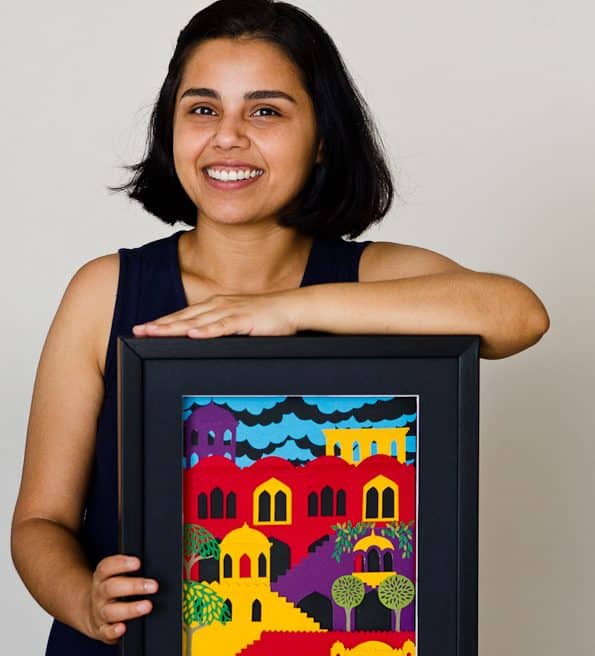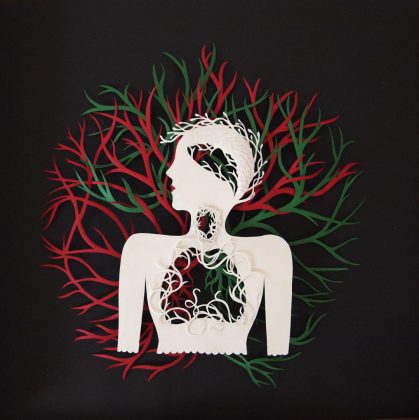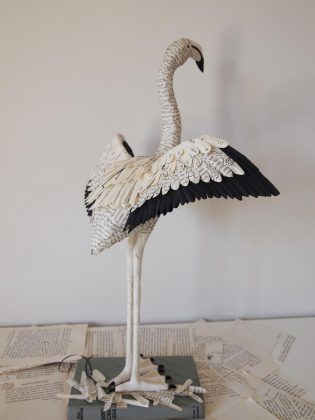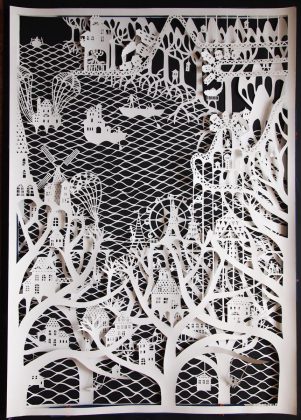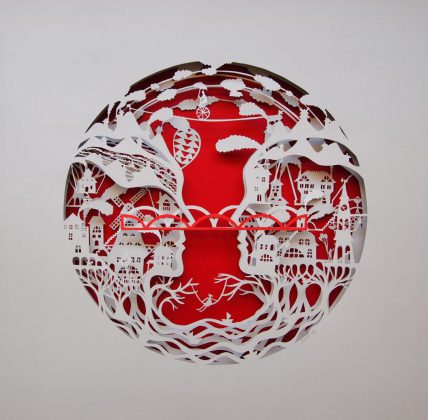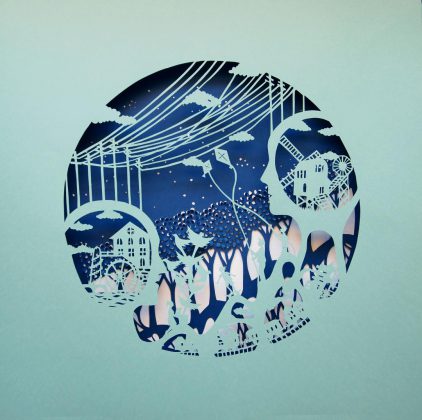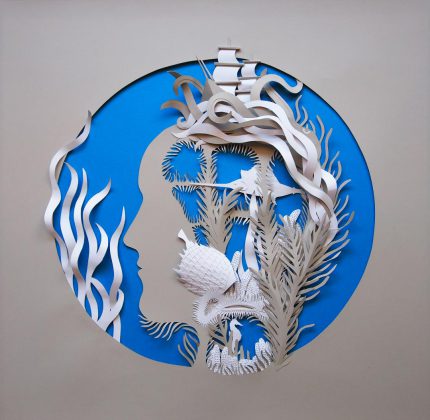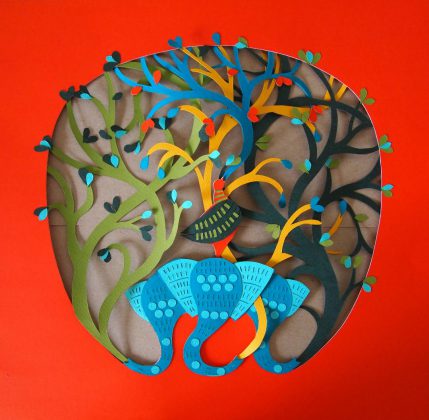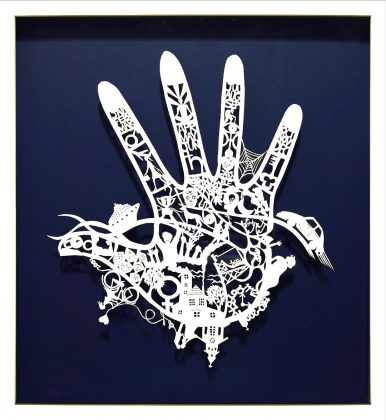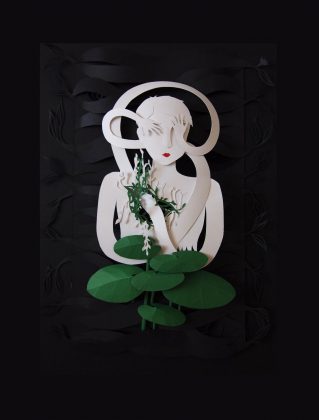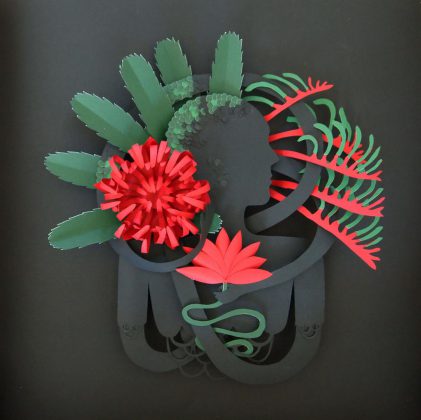At the Fringe Festival this year, emerging paper cut artists Janaki Lele and Ellen Scholobohm co-exhibited their work in the exhibition s.il.hou.ette. Their intricate and beautiful paper cuttings explore both Janaki’s Indian and Ellen’s German identities, reflecting on their individual cultural roots. Showcased at Nexus Arts studio, the work on exhibit was all created newly by Janaki as part artist in residence at Nexus.

Born and raised in Mumbai and Pune, Janaki unintentionally discovered her passion for paper art as a student of architecture in Australia. An obsessive recycler along with a creative mind, she would use left-over bits of paper and newspaper from her architectural models to recreate paper art. In 2009 while looking for a job in Sydney with a bit a spare time on her hands, Janaki began to explore her artwork and started to create single layer designs.
“I like the duality of flexibility and fragility exhibited by paper and the way I can adapt two different techniques to make my art – paper cutting to take advantage of the fragility and papier mache to make use of its flexibility,” Janaki told Indian Link. “I thrive on the challenge of conceptualising and drawing my subject matter guided by my mind and the calm that comes with cutting the paper guided freely by my hand.” It’s been ten years, and the ‘paper shaper’ has not looked back since.
The use of colour is the biggest contribution of her Indian heritage to her artworks. Janaki also takes inspiration from the imagery in tribal art of the Gond people – it’s intricacies, animal forms and colours.
When asked about her favourite art pieces in the exhibition, Janaki admitted, “I like them all as there was an equal measure of thought, love and effort put into each one of them. I do however immensely enjoy the drama of Cultural Chameleon. Its black silhouette on black background makes the rest of the colours pop and necessitates the viewer to slow down and peer at it for a bit longer to take it all in. It is also playful in its imagery of the chameleon and the bright flowers being grasped by those elongated jumble of hands. The poetry that I wrote with that piece by the same name also resonates with me as it comes very close to my way of maintaining my cultural identity in context to my current home in Australia.”
Exhibiting poetry with her artwork is not something Janaki does often. She tried it as an experiment at the exhibit in Women’s and Children’s Hospital in 2018. This time round she put more thought on the display of her work with the poetry.
“The thinking has already gone into it but it is only after the artwork is complete and I have a visual inspiration, that I proceed to put words to my thoughts,” she revealed.
The cultural connection that paper cutting has with the Indian art of Sanjhi is something Janaki only discovered in the course of this exhibition. Sanjhi is a traditional paper cutting art practised in Mathura to create stencils for making rangolis. Keeping this in mind Janaki presented her Australian crowd a rangoli of cockatoo and lotus on the closing night of the exhibition.
“The response to my exhibition has been good,” Janaki observed. “A lot of the viewers have been drawn in by the intricate, three dimensional forms sculpted out of paper. And for a few, the words in my poetry hit very close to their heart. These were people who themselves are immigrants to Australia and the story of my struggle with my identity resonated with them on a lot of levels.”



